Toot your hooters, Woodsy the Owl is 50 years old this year! We would like to use this anniversary to highlight just a few of the many resources we have in the Government Information Connection at Sycamore Library related not just to Woodsy, but also to the rest of that sometimes delightfully weird menagerie of characters the U.S. government has created over the years to charm and educate the public.
The Birth of Woodsy Owl
Woodsy Owl made his official debut on September 15, 1971. Ten years earlier, Rachel Carson’s Silent Spring had alerted the nation to the dangers of pesticides polluting the environment. Her book inspired a movement that increased throughout the 1960s, culminating in the first Earth Day celebration in 1970.
The Forest Service wanted to join in promoting this anti-pollution message—their Smokey Bear fire-prevention campaign had already succeeded beyond all expectations. But they didn’t want to dilute Smokey’s familiar slogan with a second message, so a new spokes-character was created: Woodsy, the anti-pollution owl. The two of them have continued to this day encouraging children and adults to protect the forests and all our natural surroundings.
What Is a Government Mascot?
There have been animal mascots in the military academies and branches of the armed forces since before the twentieth century, and symbols such as the bald eagle, Columbia, and Uncle Sam have been used to personify the United States for even longer, but the first instance of a government agency using an anthropomorphized animal character to promote a cause was probably the Smokey Bear campaign, which started during World War II.
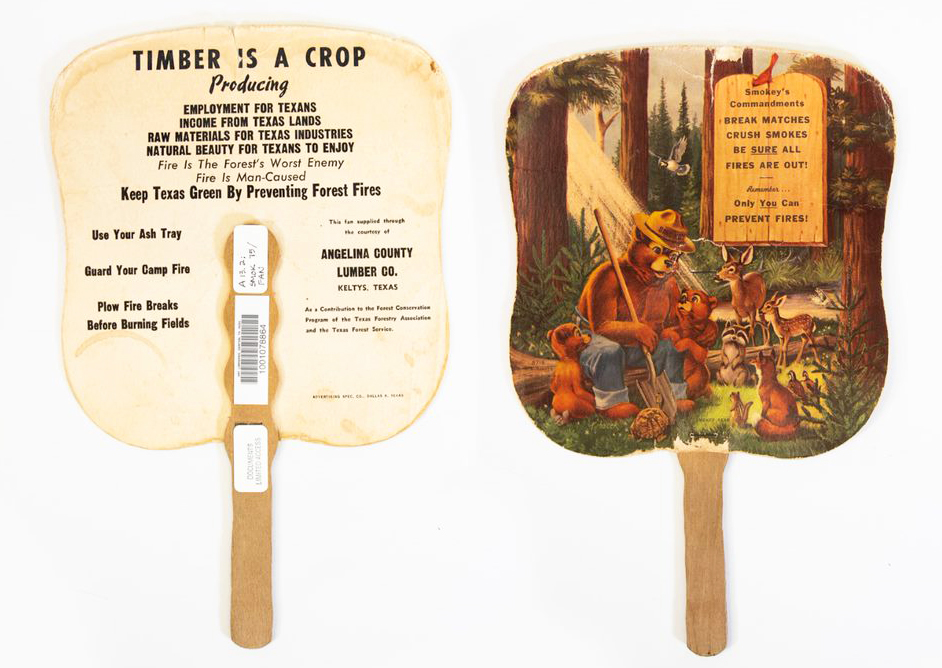
World War Worries
As the Forest Service was losing manpower and equipment to the war effort, they needed a creative way to alert American citizens to the dangers of forest fires and to instill a sense of personal responsibility for protecting the forests.
Previous attempts to communicate this message included this poster by “I Want You” designer James Montgomery Flagg, featuring a hectoring Uncle Sam:

There were also posters featuring Bambi the deer, who was quite popular because of the recent movie, but was on loan by his owner Disney for only a year. The Forest Service needed a positive message delivered by a character they could call their own.
The War Advertising Council
The nonprofit War Advertising Council had already been organized by American businesses and advertising professionals to promote the war effort through posters and other media. They encouraged Americans to buy war bonds, keep their lips sealed, and grow victory gardens. The Council assigned the advertising agency Foote, Cone and Belding the task of developing a forest fire prevention campaign using the same techniques that had been used to sell commercial products to consumers.



Smokey Bear Is Not a Mascot
Eventually the discussions led to the idea of an anthropomorphized bear named Smokey, dressed as a Forest ranger and delivering a single, memorable slogan about fire prevention. The cuteness factor and the simplicity would appeal to both adults and children, and the use of anthropomorphism has been shown to help us identify on a personal level with a message that might otherwise seem abstract or remote.
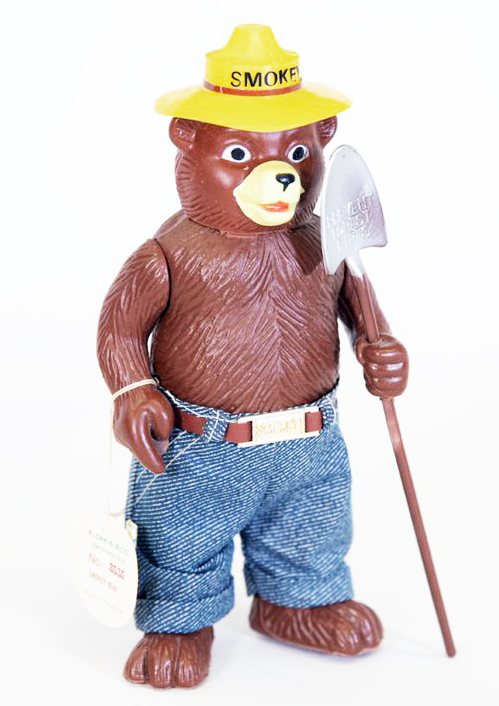
Smokey eventually acquired a vast and dazzling panoply of promotional paraphernalia. Not only was there Rudolph Wendelin’s familiar image of Smokey in his dungarees and ranger hat, brandishing a shovel; there were also posters, scripts, lesson plans, coloring books, and comic books; there was a song (that got his name wrong); there were toys, hats, t-shirts, buttons, bookmarks, and other swag, all to promote a single, laser-focused message: “Only you can prevent forest fires.”

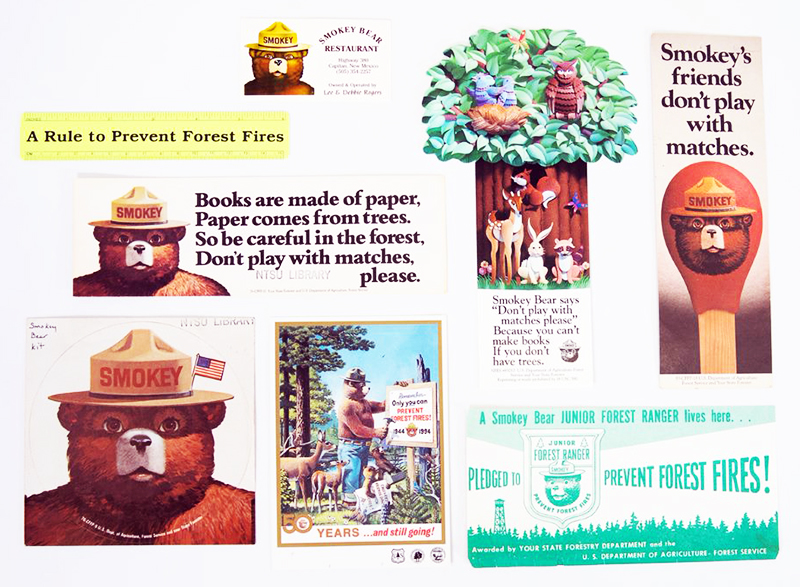
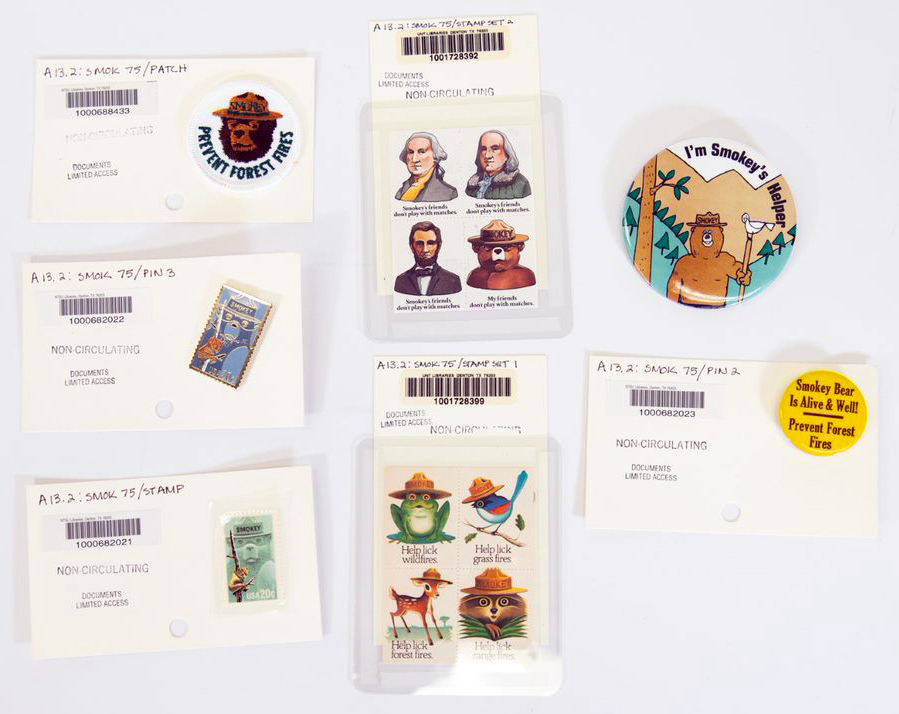
And make no mistake about it, it’s all about the message. The Forest Service wants you to be aware that Smokey is not a mascot—he is a “fire prevention bear.” Smokey has never been intended to personify the Forest Service the way other mascots might represent an entire agency or team.
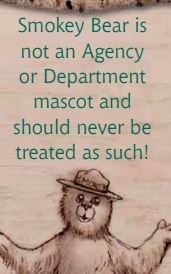
The Smokey Bear campaign was so successful that President Truman encouraged the Council to continue after the war as the Advertising Council (later shortened to the Ad Council). They would encourage advertising agencies to work pro bono to create public service advertisements, which would then be promoted for free in the newspapers, on the radio, and on the newly popular medium of television.
Woodsy Owl was not a project of the Ad Council, but his campaign was modeled after Smokey Bear’s and shared some of the same personnel. Smokey’s “caretaker,” the artist Rudy Wendelin, used his talents to give the preliminary sketches of Woodsy a distinct personality. Both characters wore pants and a hat, but nothing else; both had a ballad written about them; and both generated a huge amount of swag.
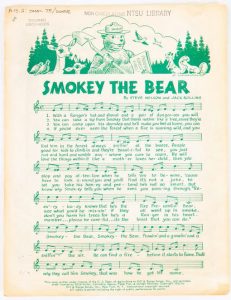
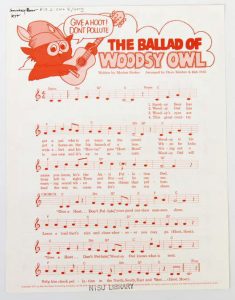
Some Advertising Superstars
Other government agencies would develop their own mascots or messengers according to this same template, with varying degrees of success. Here are a few that for a time at least were very popular, widely-recognized icons in our cultural landscape:
Johnny Horizon
Johnny Horizon was the Bureau of Land Management’s anti-littering spokesman in a popular campaign that predated and then briefly competed with Woodsy Owl. He peaked during a clean-up campaign preceding the American Bicentennial in 1976, then was retired and forgotten everywhere except in Twin Falls County, Idaho, where the communities still celebrate Johnny Horizon Day every May.
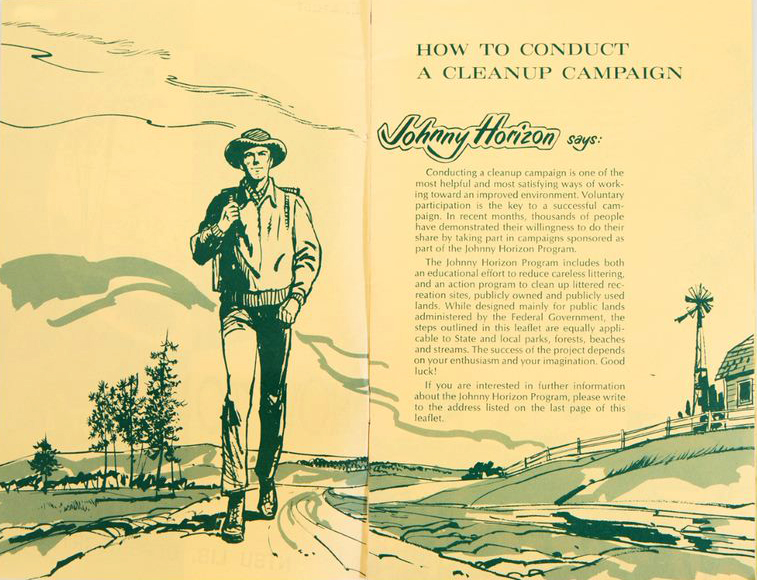
Mr. ZIP
In the 1960s, the U.S. Post Office Department used the character of Mr. ZIP in a popular campaign to encourage people to use ZIP Codes on their mail. He was largely phased out after ZIP codes became accepted as the norm, but enjoyed a brief revival during the 50th anniversary of the ZIP code system in 2013. In his heyday he was recognized by 80 percent of Americans, and many of you probably still fondly remember him today.

McGruff, the Crime Dog
In the late 1970s, the Ad Council partnered with the FBI to create an anthropomorphic animal character that, like Woodsy Owl, was deliberately modeled after Smokey Bear. The result was a hugely successful anti-crime campaign featuring McGruff the Crime Dog and his slogan “Take a Bite Out of Crime.”

Vince and Larry
In the late 1980s, the Ad Council partnered with the U.S. Department of Transportation to create a humorous campaign featuring the crash test dummies Vince and Larry encouraging Americans to “Buckle Up.” The ads ran from 1985 through 1998, and in 2010 the Vince and Larry costumes and other related items were donated to the Smithsonian Institution.
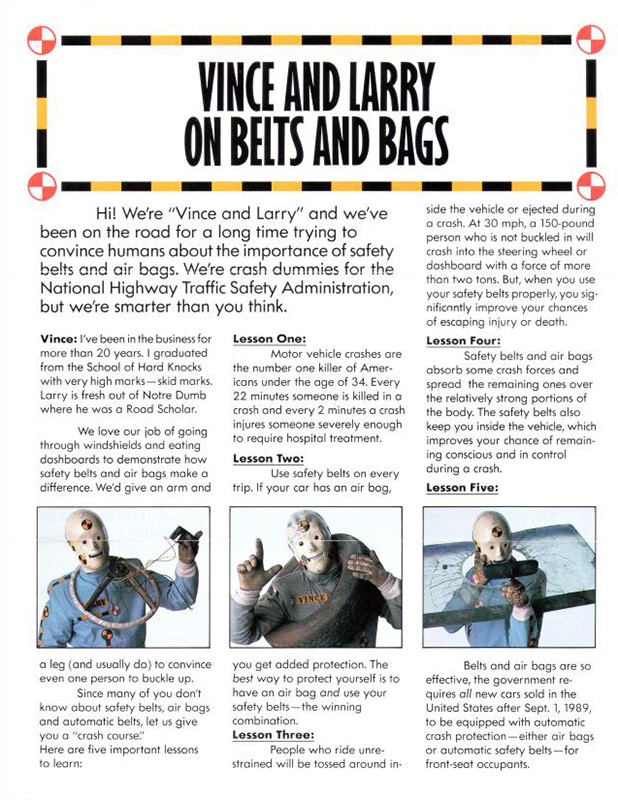

The Fun, Freaky, and Forgotten
In contrast to these few hits, there are dozens of also-rans who for one reason or another did not quite capture the imagination or support of the public.
Some of them have a certain whimsical appeal or strangeness that can inspire enthusiasm in those whose tastes run toward the bizarre. In some cases, they may even develop a cult audience.
Freddy Food Stamp
Freddy Food Stamp was borrowed by the Food and Nutrition Service from the Mississippi Department of Public Welfare. He’s little more than a rectangle with a face and limbs, but even had he been blessed with a great artist he would have become obsolete when the Food Stamp Program was replaced by SNAP.
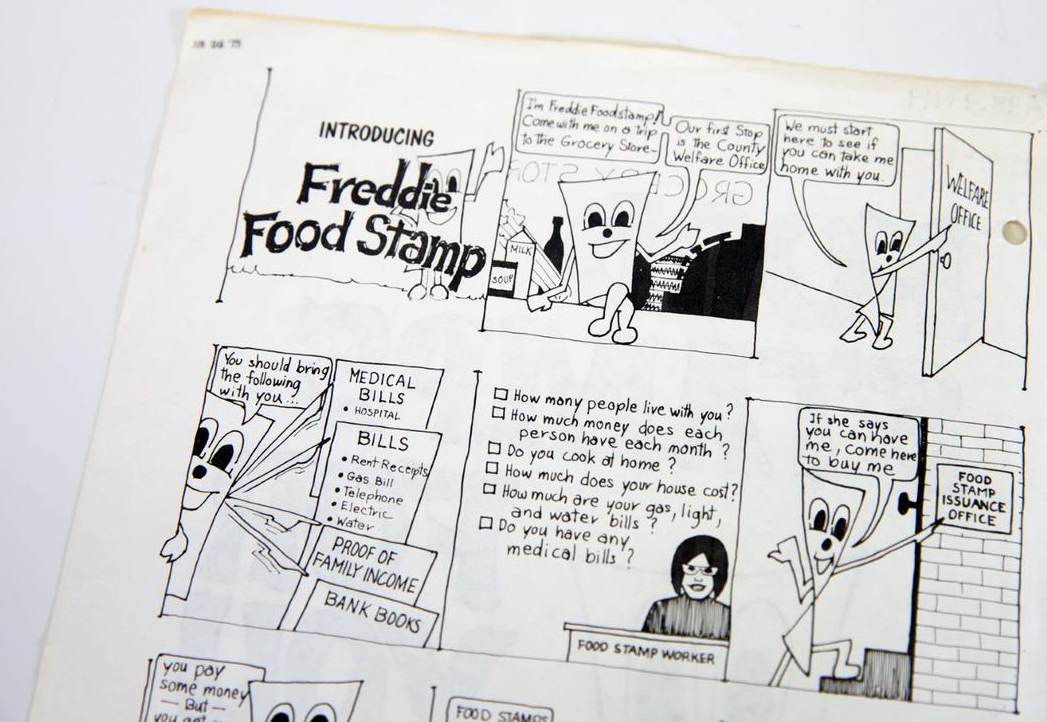
Sprocket Man
Sprocket Man was a bicycle safety superhero adapted (some might say “bowdlerized”) by the Consumer Product Safety Commission (CPSC) from a comic originally commissioned by Stanford University and a local organization called the Urban Bikeway Design Collaborative. The entire comic was drawn by a Stanford student named Louis Saekow. Sprocket Man would probably have a cult following among bicyclists if the CPSC hadn’t offended them by classifying adult bicycles as children’s toys. The comic was reprinted several times with increasingly prissy modifications in each iteration.
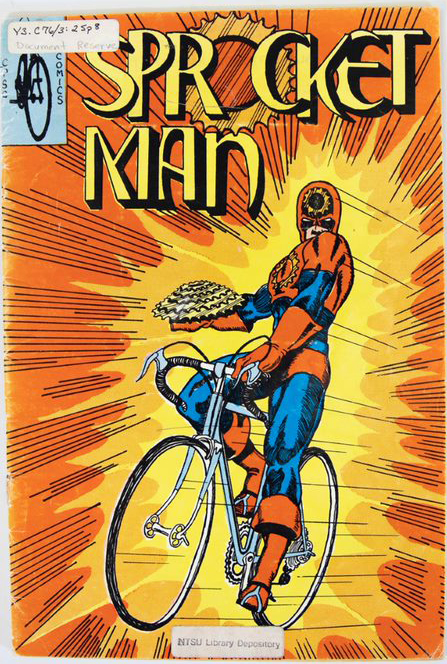
Thermy and BAC
Thermy the thermometer travels the country fighting his nemesis BAC the bacterium while educating America on the many ways food can become contaminated. Thermy’s catchy slogan is “It’s safe to bite when the temperature is right!”

In this family activity book, Thermy teaches principles of food safety with the help of three anthropomorphic friends: a pump bottle filled with soap, a cutting board, and a refrigerator. They represent the principles of cleaning, separating, cooking, and chilling in order to avoid food contamination.

Thirstin’
Thirstin’ is quite literally a tall drink of water with a baseball cap. The EPA uses him to teach children about protecting and conserving drinking water.
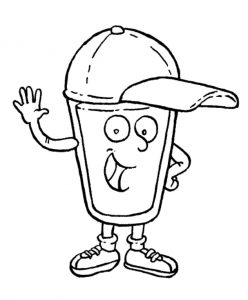
This unusually-shaped CD contains computer games, animations, and other activities that feature Thirstin’.
The Characters at NRCS
The Natural Resources Conservation Service has probably spawned more animal messengers than any other agency except the National Park Service, which seems to have a mascot for every individual national park. They include Sammy Soil, Mighty Mini Microbe (a rare female character), S.K. Worm (who when traveling is played by an animatronic puppet rather than a human being in costume), and the WhoBuddies—a group of six environmentally conscious owl superheroes.

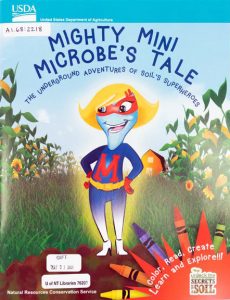
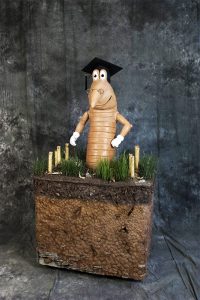

Controversies
Government mascots and messengers may be fun and educational, but they have not been without controversy.
Waste of Money
They are frequently seen as an extravagant waste of taxpayer money. Little research has been done to show whether mascots are effective in promoting social change, and often their themes seem irrelevant to the interests of young children. Sometimes there seem to be way too many characters redundantly promoting the same message.
Here are four different characters that have been used to teach children about water safety: Otto Otter, Bobber the Water Safety Dog, an anonymous safety pin, and an anonymous fish:
Unintended consequences
Smokey Bear’s slogan was changed from “Only You can Prevent Forest Fires” to “Only You Can Prevent Wildfires,” not just to address the issue of wildfires that occurred in grasslands and other areas outside the forests, but because the Smokey campaign had led to a reduction of prescribed burns, which inadvertently made the forests even more susceptible to out-of-control wildfires.
Misleading or Manipulative
Most insidiously, the Ad Council has been accused of using their access to the media to push a pro-business agenda that is not always in the public interest.
For example, emphasis on individual responsibility has been used to distract the public from the more serious and deep-seated problems created by corporations and government policies. Encouraging individual citizens to pick up their trash does little to alleviate the problem of systemic pollution by industries, and does not address the issue of companies packaging everything in disposable containers.
The Ad Council also played a major role in establishing the current perception of capitalism and free enterprise as an essential aspect of our American identity while demonizing government regulations and other interventions in the economy by branding them as socialist tendencies that can only lead to communism and tyranny.
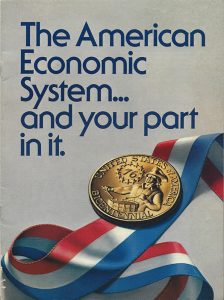
Transformations
In order to maintain a mascot or messenger’s popularity, they must be updated every once in a while to stay relevant to current concerns and to stay stylistically fresh.
Even the perennially popular Smokey Bear experienced a moment of self-doubt in the 1970. One TV ad showed actress Joanna Cassidy imploring us in a sultry voice to be careful in the forest. At the end of the message she rips her face off and reveals herself to have been Smokey Bear in disguise. He chuckles and asks, “If you had known it was me, would you have listened?”
Woodsy Owl
Woodsy Owl’s popularity grew throughout the 1970s and 1980s, but in the 1990s Woodsy became an unwitting participant in a conflict between the logging industry and the northern Spotted Owl, which had recently been added to the endangered species list. The 1990s were also a time when doctors were becoming alarmed at the growing rate of obesity among Americans, and Woodsy’s rotund owl shape made him seem like an unhealthy role model. The anti-littering message also seemed relatively trivial as climate change became a growing cause for concern.
The old, “classic” Woodsy was replaced by a trimmer, fitter Woodsy who was more appropriately dressed for hiking, and his message was broadened to “Give a Hand—Care for the Land.” The new Woodsy looked less like an owl and more like a human with an owl head.
![Help Woodsy Spread the Word [poster]](https://blogs.library.unt.edu/sycamore-stacks/wp-content/uploads/sites/24/2021/11/help-woodsy-wpread-the-word-229x300.jpg)
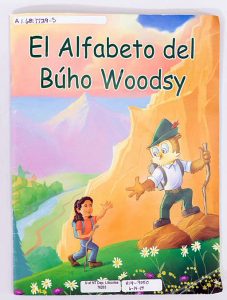
Not everyone was impressed with the transformation. The new Woodsy, a man with an owl face and wing-hands, looked like a variation on Vincent Price’s man-insect hybrid in The Fly. Some said his face looked like a chicken nugget.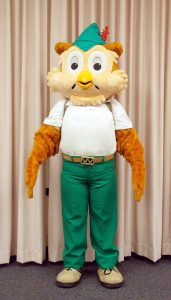
The new slogan proved so unmemorable that when a survey was conducted a few years after the updated image, his old slogan was still the most recognized by Americans. The new slogan came dead last, even behind two “decoy” slogans. Eventually Woodsy kept both the original and the new slogan. Today even his new “buff” image might be criticized as “fat shaming.”
To the horror of fans who had grown up with the classic Woodsy, the old costumes were ordered to be burned:
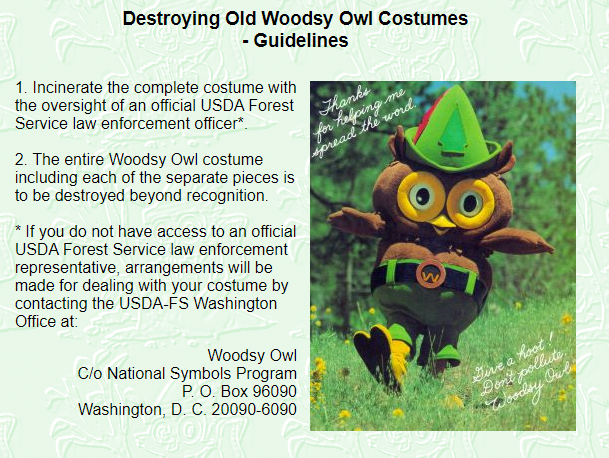
In 2020 the band Kitsch Club released a song entitled “Burn Him Down,” inspired by the destruction order.
Woodsy Owl is a character still used today, primarily in educational materials for young children, produced in partnership with the Head Start program.
Ben’s Guide
Ben’s Guide to the U.S. Government for Kids provided educational resources and games to teach children in grades K–12 about how the U.S. government works and about related topics such as our national symbols. Ben Franklin was not around when the Government Printing Office was created, but his experience as a printer and his role in drafting some of the most important founding documents of our nation made him the perfect mascot for the GPO’s educational website.
The original Ben’s Guide to the U.S. Government was released in 1999 and was very text heavy. As with so many webpages designed in those early days of the World Wide Web, the illustrations seem dated and somewhat amateurish today.
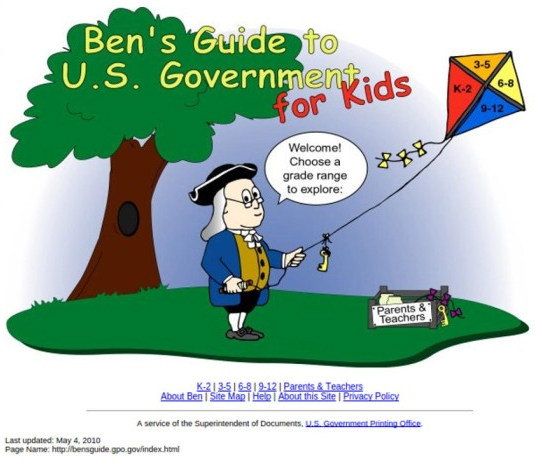
On November 17, 2015, the Government Publishing Office launched an updated and redesigned version of Ben’s Guide. The Federal Depository Library program partnered with the American Association of School Librarians (AASL), a division of the American Library Association (ALA), to ensure the quality and comprehensibility of the site’s content and to make sure it was suitable for the age ranges of the intended audience. The remake is far more polished and interactive than the old site, and the division into grade levels was replaced by three categories cleverly named after levels of training in the printing trade. In September 2016, the new Ben’s Guide was selected as one of the American Library Association’s “Great Websites for Kids.”
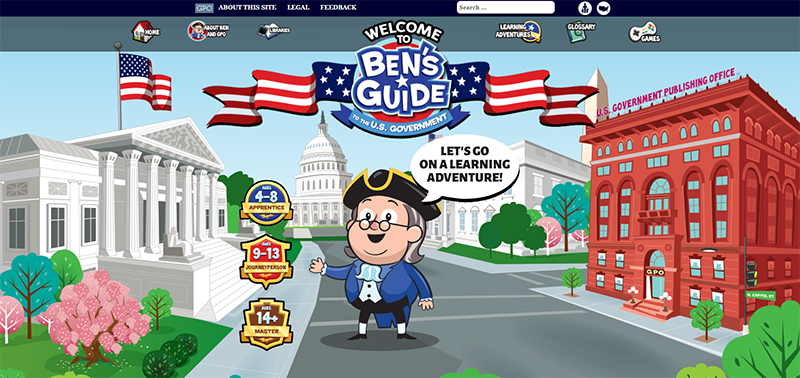
Compared to the original Ben Franklin mascot, the new Ben has personality and panache, and there’s definitely no size shaming here as there was with Woodsy! Notice he has also been given a catchy slogan — “Let’s Go On a Learning Adventure!” This is an example of a mascot update that works.
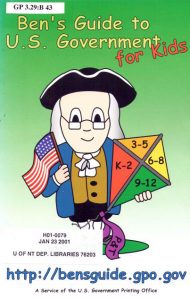
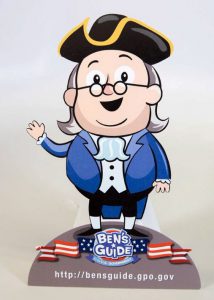
Celebrate with Us
We invite you to visit the Sycamore Library and celebrate Woodsy Owl’s birthday with us. You can see a display of Woodsy-themed items from our collection and investigate the many other mascots and messengers in our library. We also invite you to explore the Sycamore Stacks Blog, the Government Information Connection, and other collections and resources at Sycamore. Come on over, and you might be surprised at what we have—you’ll find more at Sycamore!
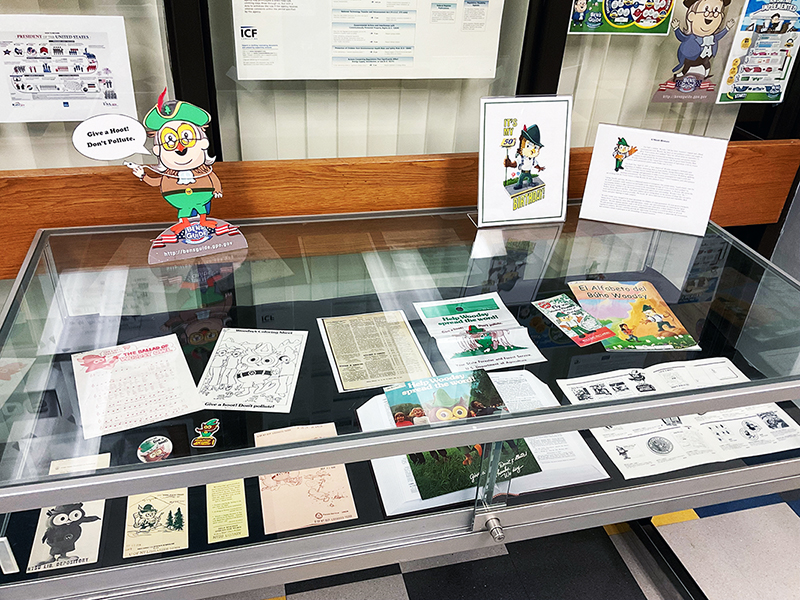
Article by Bobby Griffith.
References
The Birth of Woodsy Owl
Fuller-Howell and Iris Velez. “Woodsy Owl at 40.” Forest History Today. Spring 2012. https://foresthistory.org/wp-content/uploads/2016/12/2012-Spring_Woodsy-Owl-at-40.pdf
Westover, Robert Hudson. “Celebrate Woodsy Owl’s 50th Birthday.” U.S. Forest Service. April 22, 2021. https://www.fs.usda.gov/features/celebrate-woodsy-owls-50th-birthday
What Is a Government Mascot?
Pasquill, Robert G. Harry Ludwig Rossoll et al: A Study of the Smokey Bear Artists. 2015. http://ppolinks.com/forestservicemuseum/2015_5_42.pdf
Smith, J. Morgan. “The Story of Smokey Bear.” The Forestry Chronicle, Vol. 32, No. 2, June 1956. Pp. 183–188. https://pubs.cif-ifc.org/doi/pdf/10.5558/tfc32183-2
Some Advertising Superstars
“Flashing Across the Country: Mr. Zip and the ZIP Code Promotional Campaign.” Smithsonian National Postal Museum. https://postalmuseum.si.edu/research-articles/flashing-across-the-country/the-zip-code-promotional-campaign
Lewis, James. “Forgotten Characters from Forest History: Johnny Horizon.” Forest History Society. March 17, 2011. https://foresthistory.org/forgotten-characters-from-forest-history-johnny-horizon/
National Crime Prevention Council. “McGruff.” https://www.ncpc.org/about-ncpc/mcgruff/
“Vince and Larry Dummies ‘Crash’ into the Smithsonian.” National Museum of American History. July 22, 2010. https://americanhistory.si.edu/blog/2010/07/vince-and-larry-dummies-crash-into-the-smithsonian.html
The Fun, Freaky, and Forgotten
Palmer, Barbara. “Sprocket Man, the Superman of bike safety, returns.” Stanford Report. October 23, 2002. Available at Stanford: Transportation. https://transportation.stanford.edu/bicycle/about-the-bicycle-program/meet-sprocket-man
“Sprocket Man Comics.” The Retrogrouch. September 25, 2015. http://bikeretrogrouch.blogspot.com/2015/09/sprocket-man-comics.html
Controversies
“Feds Spend Billions on Useless Samples, Public Relations Gimmicks, and Mascots Nobody Knows.” Current Affairs. https://currentaffairsonline.co.uk/2019/11/01/feds-spend-billions-on-useless-samples-public-relations-gimmicks-and-mascots-nobody-knows/
“How socialism became un-American through the Ad Council’s propaganda campaigns.” The Conversation.
https://theconversation.com/how-socialism-became-un-american-through-the-ad-councils-propaganda-campaigns-132335
Lutz, William D. “’The American Economic System’: The Gospel According to the Advertising Council.” College English, Vol. 38, No. 8, Mass Culture, Political Consciousness and English Studies (Apr., 1977), pp. 860-865. https://doi.org/10.2307/375958
Pyne, Stephen. “It’s Time to Retire Smokey Bear.” History News Network. Available at https://historynewsnetwork.org/article/160530
Strand, Ginger. “The Crying Indian.” Orion Magazine (c. 2008?) Available at https://orionmagazine.org/article/the-crying-indian/
Summers, Megan. “The Shocking True Story Behind The ‘Crying Indian’ Commercial.” Ranker. https://www.ranker.com/list/crying-indian-commercial-true-story/megan-summers
Transformations
American Library Association. Association for Library Service to Children. “Ben’s Guide to the U.S. Government.” Great Websites for Kids. http://gws.ala.org/node/8340#.YYcMI2DMKM9
“Ben’s Guide to the U.S. Government: Updates and Next Steps.” FDLP Newsletter. August 25, 2015. Last updated August 26, 2015. https://www.fdlp.gov/all-newsletters/featured-articles/2345-ben-s-guide-to-the-u-s-government-updates-and-next-steps
Brereton, Erin. “Guide to U.S. Government for Kids: Useful info buried by dull site design and way too much text.” Common Sense Education. Updated May 2013. https://www.commonsense.org/education/website/bens-guide-to-us-government-for-kids
Keene, Linda. “Is Woodsy Owl Endangered? Whoooo Knows?—Rangers Fearful of Ruffling Feathers in Logging Areas,” The Seattle Times, June 14, 1990.
“Woodsy Owl not a welcome bird.” UPI Archives. April 13, 1990. https://www.upi.com/Archives/1990/04/13/Woodsy-Owl-not-a-welcome-bird/6395639979200/
Zong, Louie (@everydaylouie). “did you know that the forest service requires you to burn old woodsy owl costumes? me and @quinnecl wrote a song about it. please enjoy, BURN IT DOWN.” Twitter, Apr 19, 2020, 12:19 AM. https://twitter.com/everydaylouie/status/1251742084026888192.
Vance-Cooks, Davita. Prepared Statement before the Committee on House Administration, U.S. House of Representatives, Priorities of the House Officers and Legislative Branch Entities for FY 2018 and Beyond. February 26, 2017. https://www.congress.gov/115/meeting/house/105520/witnesses/HHRG-115-HA00-Wstate-Vance-CooksD-20170206.pdf.


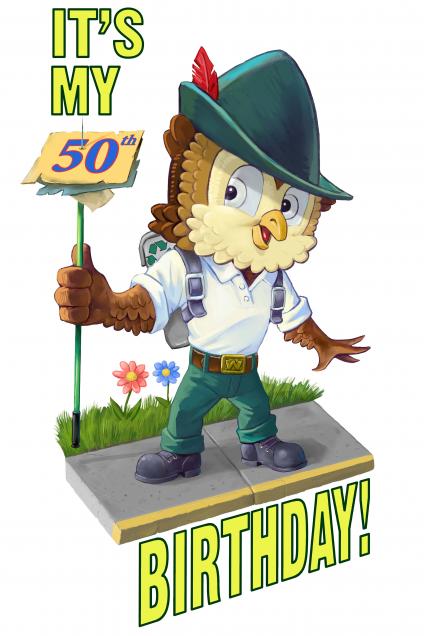
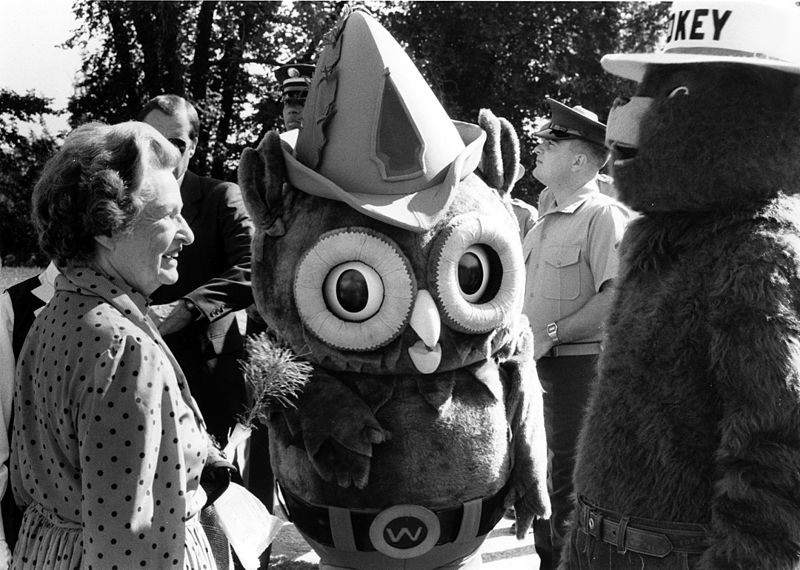


Leave a Reply